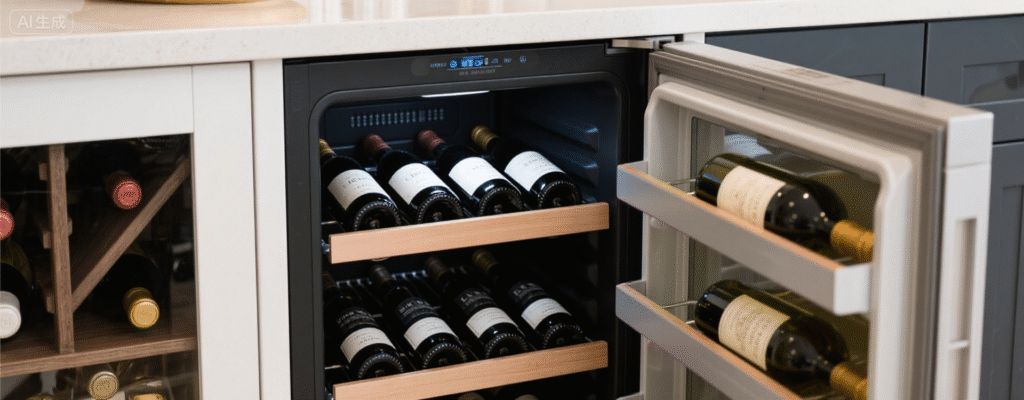Integrating a built in wine refrigerator is a significant upgrade for any kitchen or entertainment area, merging luxury with practicality. This article will guide you through the essential considerations for selecting the perfect unit, focusing on critical features like cooling technology and climate zones. Understanding these elements is key to creating an ideal environment for your collection and enhancing your home’s value and aesthetic.
The Art of Seamless Integration and Design
Unlike freestanding models, a built in wine refrigerator is designed for flush installation, typically under a counter or within cabinetry for a custom, high-end look. This seamless integration is a hallmark of modern kitchen design. The key to this installation is the need for front-venting technology. Standard refrigerators vent heat from the back or sides, but built-in units are engineered to exhaust heat from the front grille, allowing them to be enclosed without risk of overheating. This design consideration is crucial; a 2019 study by the Association of Home Appliance Manufacturers (AHAM) emphasized that proper ventilation is the leading factor in the longevity and efficiency of built-in appliances.
When planning for integration, you must also consider the door swing and exterior finish. Many models offer reversible doors and options like stainless steel, panel-ready designs for custom cabinetry, or glass fronts to showcase your collection. The goal is to choose a unit that doesn’t just function as an appliance but acts as a cohesive element of your room’s design, much like the sophisticated options available through reputable collections of built in undercounter wine coolers.
Advanced Cooling: The Heart of Wine Preservation
Beyond aesthetics, the core purpose of any wine fridge is preservation, and the cooling system is its most critical component. For a reliable built in wine refrigerator, seek out models with a thermoelectric cooling system for smaller capacities (under 40 bottles) or a compressor-based system for larger collections. Thermoelectric units are valued for their vibration-free operation, which is essential as vibrations can disturb a wine’s sediment and accelerate chemical aging. Compressor systems, however, are more powerful and better suited for warmer environments or larger spaces.
Another vital feature is dual-zone climate control. A standard single-zone unit maintains one temperature, which is problematic if you store both red and white wines. The ideal serving temperature for reds is generally between 55-65°F (13-18°C), while whites and sparkling wines are best at 45-55°F (7-13°C). Dual-zone units, first popularized in the early 2000s by brands like EuroCave and Sub-Zero, create two independently controlled climate zones within a single cabinet. This allows you to perfectly preserve a diverse collection, ensuring every bottle is served at its peak. Investing in a unit with precise temperature management and UV-protected glass is non-negotiable for serious enthusiasts exploring a range of built in undercounter wine coolers.
In summary, selecting the right built in wine refrigerator hinges on two main pillars: seamless design integration with proper front ventilation and a sophisticated cooling system tailored to your collection’s needs. By prioritizing these factors, you move beyond simple storage to active preservation, ensuring each bottle’s character and quality are maintained. Ultimately, a well-chosen unit is more than an appliance; it’s a long-term investment in your home’s functionality and your passion for wine, perfectly embodied by the selection found in dedicated built in undercounter wine coolers collections.
